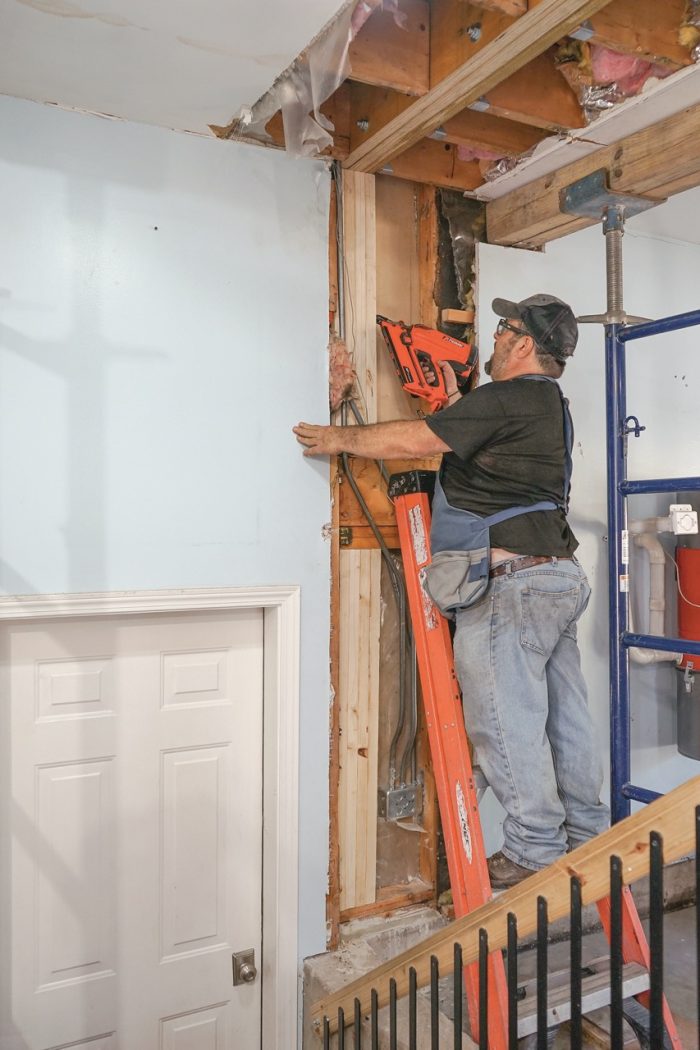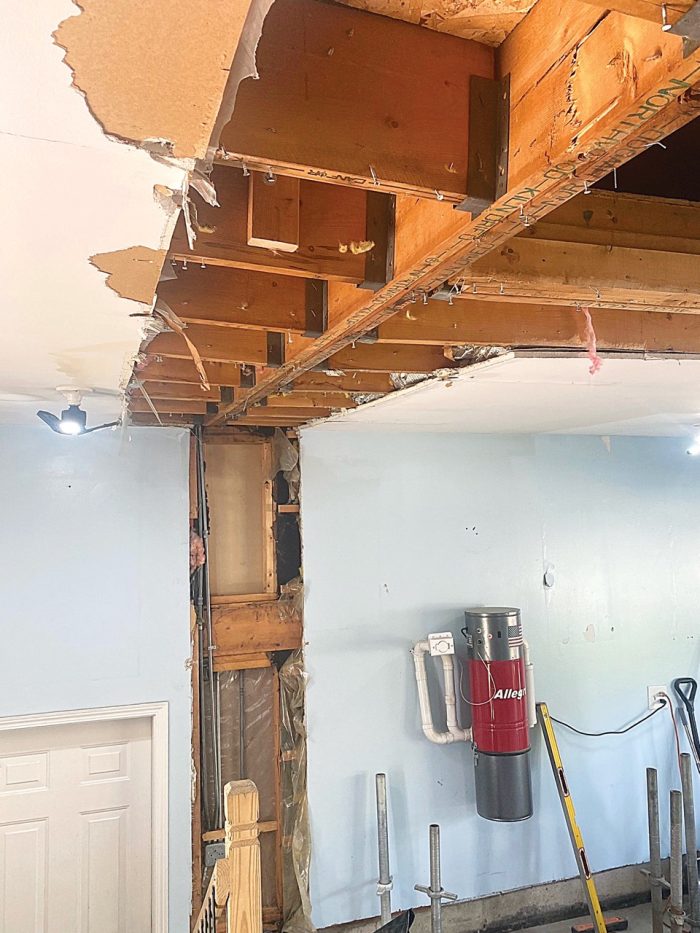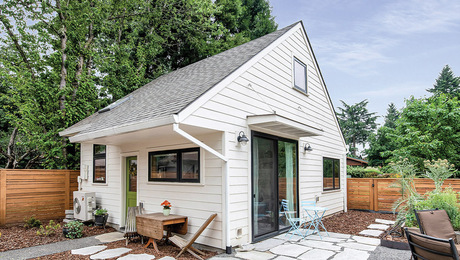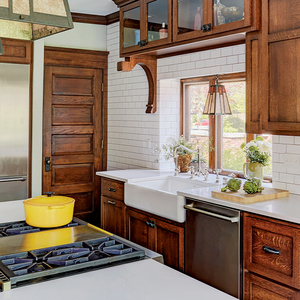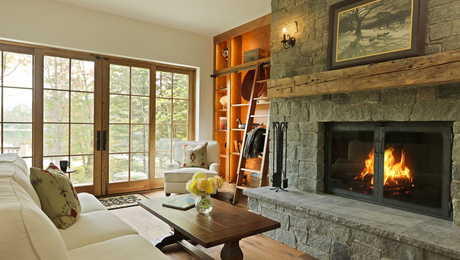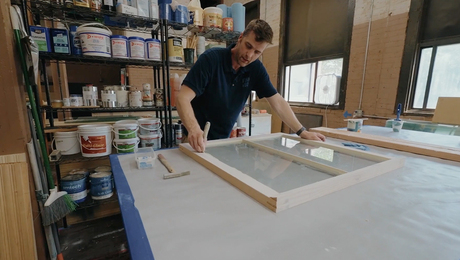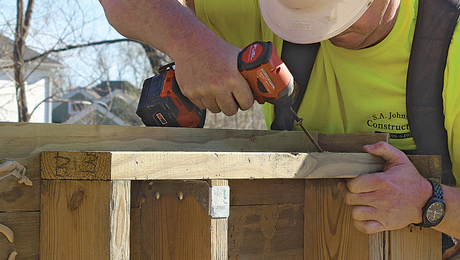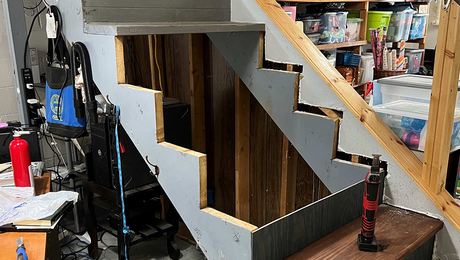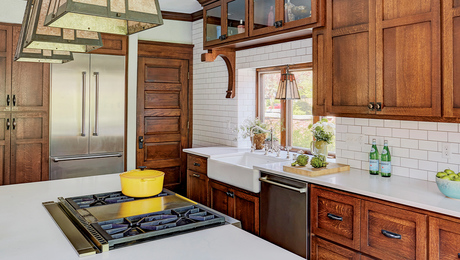When the Unexpected Happens, Have a Plan
Don't buy in to the TV show nightmares—when you uncover something unforeseen on a remodeling project, take these steps to keep the process moving and fix the issue.
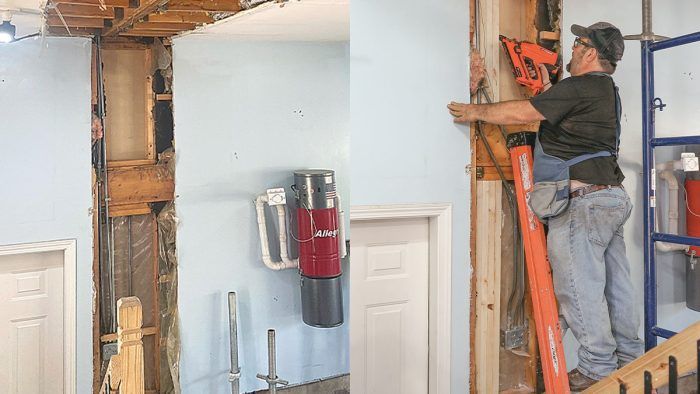
Turn on almost any home renovation TV show, and you will find some sort of over-dramatized scene capturing the remodeler or homeowner opening a wall. For some reason, they’ve yet to determine the most significant details about the house and answer the most important questions about the scope of work. Is this a load-bearing wall? Can we move or remove it? Unfortunately, the fears captured on these shows have spilled over into real life. I have had clients say to me things like, “You never know what construction problems we’re going to find!”
As a seasoned professional, I actually have a pretty good idea what I am going to find when I open a wall. Often, I can look in the attic or basement to see the direction of the ceiling or floor joists, which tells me which walls are load bearing. Even in a finished basement there might be a storage area where the floor-joist direction is viewable. Sometimes in older homes you’re able to pull vent covers to see the joists. So, I’d certainly be able to determine if it was load bearing during our preconstruction process, and I’d be able to determine what would be required structurally to remove the wall.
That’s not to say that I’m never surprised when something is built poorly or has been damaged by previous contractors or water over the years. One trick I use is to shine a flashlight alongside a wall or ceiling. The raking light can highlight previous drywall or plaster cracks, which might aid in discovering possible problem areas. Another thing to be on the lookout for when working in older homes is lead paint and asbestos. These will need professional abatement and can add time and money to a project.
The thing is, when I do find something unusual, I know the proper steps to take to correct it. Knowing exactly what to do when the unexpected happens is precisely what it means to be a building professional. In my work at Great Lakes Builders, a Chicago-area company specializing in structural repairs, a large portion of our preconstruction process is to aid engineers in a way that keeps the job on schedule and on budget. Here are the basic steps I take when we run into something unforeseen.
Document Everything
I use my phone a lot on the job, and this is a situation when it comes in particularly handy. The first thing I do when we encounter something we haven’t planned for is to document the situation in photos. The first few photos I take at a distance to easily identify what part of the project I am trying to show. The next set of photos are taken much closer and are composed to clearly show what I have found.
For example, if we run into fully functioning knob-and-tube wiring, old plumbing with minor leaks, ductwork that is not connected or has been damaged, or—of course—over-notched joists or joists with oversized holes, I document everything in photos and start the process of fixing the situation. Again, none of these issues are entirely surprising, but they affect the scope of our work.
Most of the time I will also write down some notes about the situation. My notes may include a description, measurements, spans, and dimensions. I spend only half of my time in the field. So, when I’m not on-site, this is exactly what I expect our employees to do as well. And they know to notify me immediately. Going forward, these photos and notes will be used for communication with the designer and engineer, other trades, and the homeowner.
Notify the Client
Building, remodeling, and repair work can be emotionally charged for homeowners. I make sure to communicate clearly to the client what I have found and to stay extremely calm and patient. I never interrupt the client, who is generally talking a million miles an hour because suddenly there’s a ton of uncertainty. It can be a roller coaster of a situation for a homeowner.
While I alert my clients to the situation, I don’t give them any more information than they need. Of course, if they ask me anything, I try my best to explain what we found. But generally, I just reassure them that everything is fixable, and that I will next be notifying the architect and/or the structural engineer. I inform the client that the design and engineering professionals may charge for a site visit, but I also let them know my opinion: This is money well spent.
Notify the Design Team
I typically start my communication with the designers and engineers with an email, which makes it easy to include marked-up plans showing where the situation was found, photos, notes on site conditions, and a brief description of the problem. And I include my request for their participation. The email might read like this:
“Hey Tom, I’m almost wrapped up with the demo on the Smith project. It looks like an HVAC contractor 20 years ago cut out most of our main girder beam to install a duct. I spoke to Mrs. Smith and showed her the issue and suggested we have a site visit. I did inform her that you will most likely charge her for the time. I need to get this addressed right away. Can you come out tomorrow?”
Once I’ve given the designer or engineer a chance to read the email and look at the documentation, I follow up with a phone call to make sure everyone understands the issue clearly and knows that this is an urgent matter for our shared client.
Troubleshoot the Situation
The fourth step is a meeting with my team to come up with a few different ideas to remedy the situation. We’re looking for feasible options that we have the skills to execute. For example, if we find a cracked foundation that is actively leaking, we must determine from what side to make the repair. Working from the exterior and retrofitting a proper waterproofing membrane is arguably the best solution, but it may not be feasible. Negative-side (interior) waterproofing might be the only option, and it is a solution that our team can execute. On the other hand, if we find live knob-and-tube wiring in a wall, we’ll need to call in a licensed electrician to replace it.
It’s important that our ideas meet the needs of our clients whenever possible. This means doing everything we can to keep the job on schedule and on budget. Because this isn’t always possible, we add an hourly rate into our contract. We have the bid price for all the work indicated by the design professional, and anything unforeseen that leads to additional work we charge for by the hour.
Meet the Design Team On-Site
Now that we have some ideas on how to proceed, our meeting with the design professional will be well-informed. The goal of our on-site meeting is to discuss what we’ve found and to share ideas of how we would like to proceed, emphasizing that we’d like to use materials that we can source locally or in a timely manner. If the architect or engineer has concerns at this point, I’d recommend diving into what those concerns are. For example, if there’s an anchoring issue, I would ask if we can bump up the anchor diameter or the quantity of anchors. If we need to reinforce joists and the engineer doesn’t think SPF lumber will work, what about Douglas fir, LVLs, or LSLs? We hope to leave this meeting in agreement and ready to move forward.
Stay Positive
If the engineer or architect designs a solution that is out of your comfort zone, don’t get discouraged. Ask for contractor recommendations. When you meet with the contractors, ask what you can do to help. This might include laying floor protection or installing dust-barrier walls. It could be demo work, or maybe just providing a dumpster or a porta-potty. It doesn’t matter; the last step is to stay positive and do whatever is helpful. Remember, you have done everything you can and should do in a situation like this.
To summarize, when the unexpected happens, proper documentation makes it possible to clearly identify the issue you are facing. Notifying your team and your client immediately and taking the time to explain that you have uncovered something unforeseen keeps the process moving and shows everyone that you are on top of it. When you brainstorm with your team on different ways to approach the situation, you are doing all you can to leave no stone unturned.
By reporting the construction problems along with some solutions that you can execute to the design professionals, you are showing your willingness to own the situation. Hopefully the design professional on record will agree with you—and in no time at all, you will have a clear and defined scope of work that you can execute.
— Jake Lewandowski (@jakemlewandowski) is a construction manager with Great Lakes Builders, a contracting company in Elk Grove Village, Ill., that specializes in structural repairs. Photos by the author.
RELATED STORIES
- Constructing Clear Communication With Your Clients
- Engineering Lessons
- Good Communication with Homeowners is Crucial
Fine Homebuilding Recommended Products
Fine Homebuilding receives a commission for items purchased through links on this site, including Amazon Associates and other affiliate advertising programs.

Homebody: A Guide to Creating Spaces You Never Want to Leave

The New Carbon Architecture: Building to Cool the Climate

Reliable Crimp Connectors
